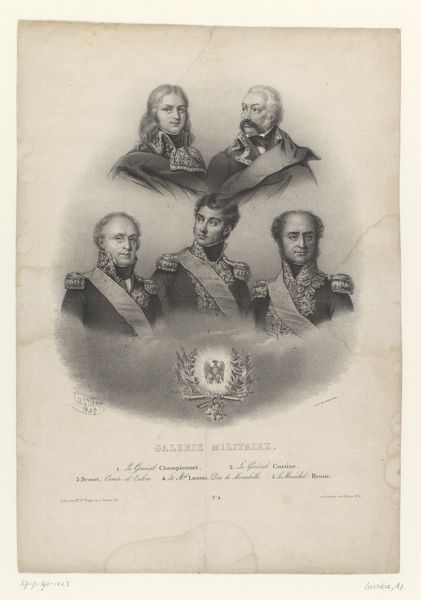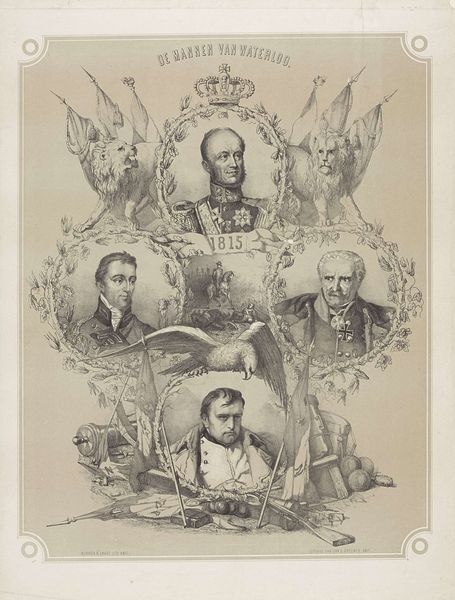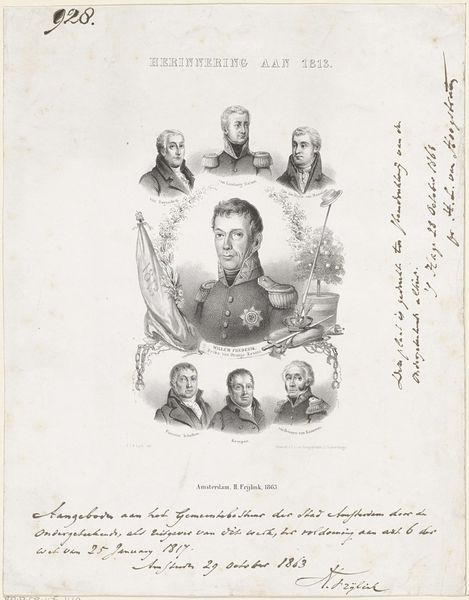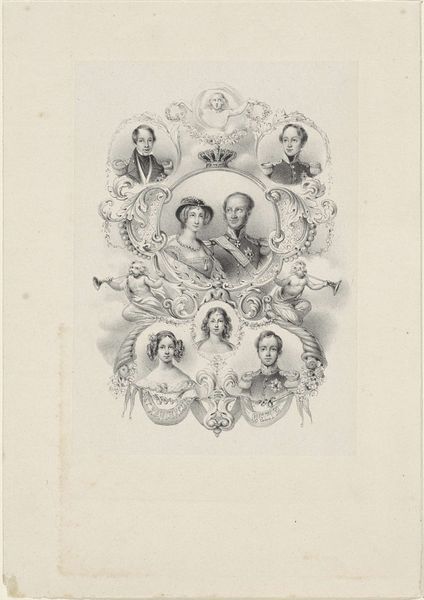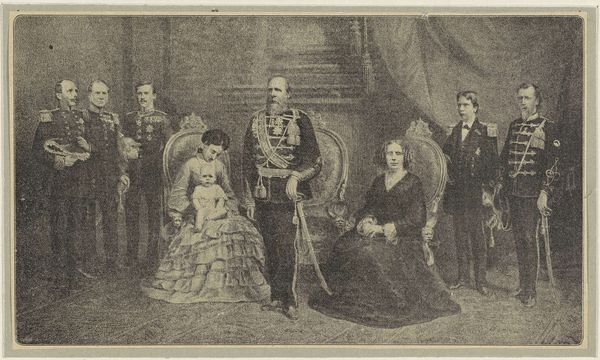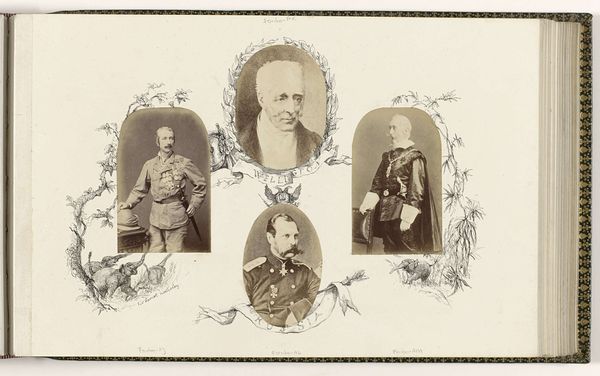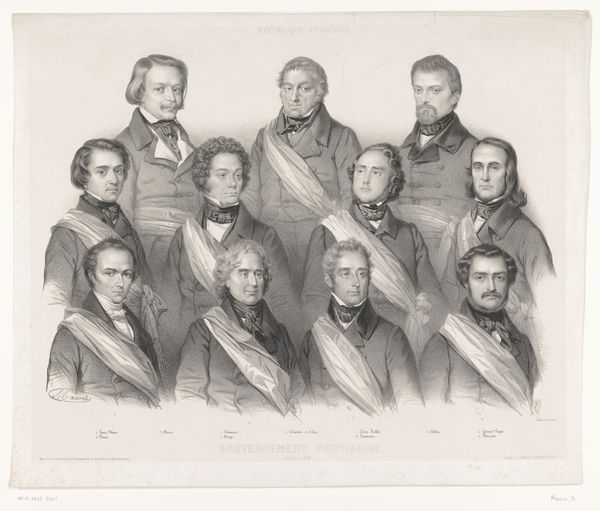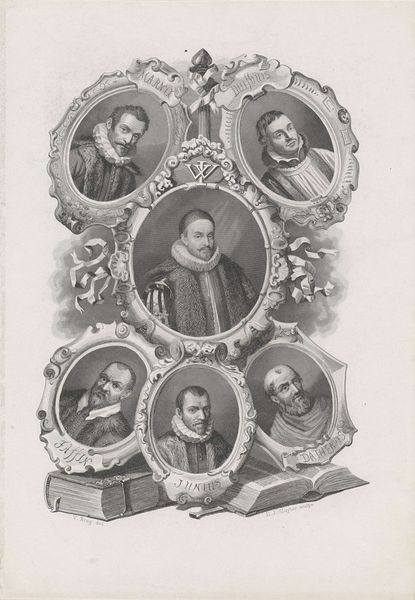
print, engraving
#
portrait
#
neoclacissism
# print
#
pencil drawing
#
group-portraits
#
history-painting
#
academic-art
#
engraving
Dimensions: height 465 mm, width 347 mm
Copyright: Rijks Museum: Open Domain
Curator: This engraving, titled "Portretten van acht vorsten van Europa" or "Portraits of Eight Sovereigns of Europe," was created in 1833 by Jacques François Gauderique Llanta. Editor: It strikes me as immediately powerful, but strangely lifeless. Eight rulers, neatly arranged, but with very little animation or individual character showing through. It’s so rigidly composed. Curator: Yes, the arrangement and medium certainly contribute to that sense of formality. Prints like this played a crucial role in disseminating images of power. They were carefully orchestrated visual tools used to reinforce ideas about leadership, stability, and European interconnectedness during a time of considerable social and political change. Editor: It's fascinating to consider this not just as a depiction, but as a manufactured object circulated with intention. Look at the details of the engraving – the precise lines creating textures in the clothing, the hatching that models their faces... it's meticulous labor meant to project authority. And who controlled that production? Whose hands physically made this message? Curator: That’s a vital question. Artists, engravers, and publishers operated within specific networks and under various patronage systems. The image supports this perception, solidifying the place of these figures in a visual language of dominance that had strong ties to Neoclassicism, reflecting back to ideals of order and reason. Editor: It's also interesting how these portraits become almost interchangeable. They're rendered using the same techniques, presented with similar composure. Does that homogenisation inadvertently challenge the very concept of individuality and uniqueness associated with sovereignty? The visual representation really reflects the Industrial processes that dominated production at this time. Curator: Potentially, although I'd argue that such subtle critiques might have been overshadowed by the overwhelming message of strength. What are your thoughts on how this engraving functions as a historical artifact? Editor: It is a product, reflecting the specific material conditions and social values of its time, yes? It reminds us that even seemingly straightforward representations of power are constructed. Its very existence poses many different points for us to interpret beyond the men themselves. Curator: Precisely. I find this artwork a revealing object through which we can explore both the intent and impact of political imagery during a key era in European history. Editor: And a potent reminder that what we see is often a product of unseen hands and deliberate choices, and we can interpret the meaning of the portrait through its making and function.
Comments
No comments
Be the first to comment and join the conversation on the ultimate creative platform.
